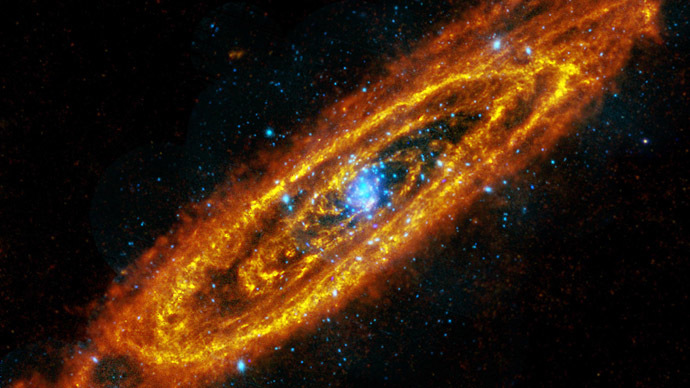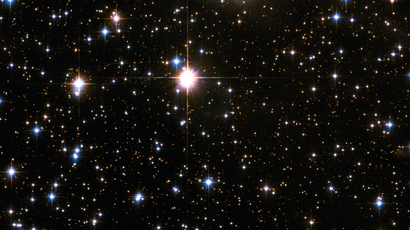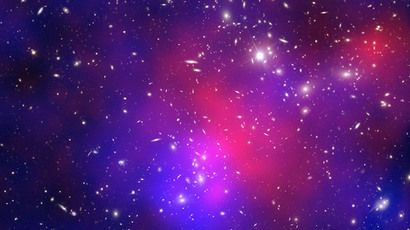Milky Way, Andromeda galaxies set to collide in giant game of space bumper cars

A short time ago, in a galaxy very, very close by, a NASA satellite thought it detected a gamma ray burst in Andromeda. It was a false alarm, but astronomers used the opportunity as a reminder that our galaxy and Andromeda are set for a head-on collision.
NASA’s Swift satellite discovers and measures gamma-ray bursts, the most powerful explosions in the universe, and their afterglow in X-ray, optical, and ultraviolet wavelengths of light. The space agency says the spacecraft is designed “with powerful telescopes and quick reflexes to capture gamma-ray bursts as they flash and leave a lingering afterglow.”
On Wednesday, astronomers and astrophiles alike buzzed with the news that Swift’s equipment had captured a powerful flash of gamma rays, believed to be coming from the Andromeda Galaxy. Those who watch the sky were caught up in the possibility that a clashing pair of neutron stars or a bright X-ray source was acting up a mere 2.5 million light-years away, NBC News reported.
But, alas, the excitement was short-lived. By the time more raw data came in and the initial information was re-analyzed, the project team realized what they thought was a giant burst of radiation was not the dense remnants of dead stars crashing together.
“We... do not believe this source to be in outburst. Instead, it was a serendipitous constant source in the field of view of a BAT subthreshold trigger,” Swift team member Kim Page wrote in a NASA message.
The reason scientists (and the Twittersphere) were in such a tizzy was because, “The Andromeda galaxy, known in astronomical parlance as M31, holds a special place in our own future,” the New York Times wrote.
NASA astronomers announced in 2012 “with certainty” that the next major cosmic event to hit the Milky Way will quite literally hit the Milky Way. Our galaxy will have a “titanic collision” with neighboring Andromeda. Not only that, the Triangulum galaxy, M33, is likely to join in on the action, causing a three-galaxy pile-up (and could even merge with the other two), scientists said in a statement.
The Milky Way and Andromeda are the dominant members of a small family of galaxies called the Local Group. Family ties bind the bevy together in the form of their mutual gravity.
NASA sought to assure the world that the sun and Earth are unlikely to be hit by stars or planets from Andromeda because of the vast emptiness of the two galaxies.
So Earth, they said, should easily survive what will be a 1.9 million kilometer per hour (1.2 million mile per hour) galactic merger. Even at that speed, the event would take about 2 billion years.
"It's like a bad car crash in galaxy-land," Roeland van der Marel, an astronomer with the Space Telescope Science Institute in Baltimore, which operates Hubble, told the media.
Scientists said in 2012 the collision would take place in 4 billion years. But the New York Times reported Wednesday, “Recent measurements with the Hubble Space Telescope have confirmed that they will hit head on in about two billion years.” Apparently the galaxies have gone to “ludicrous speed,” as the movie Spaceballs would say. One can only hope the light show from the combined galaxies won’t be plaid.














